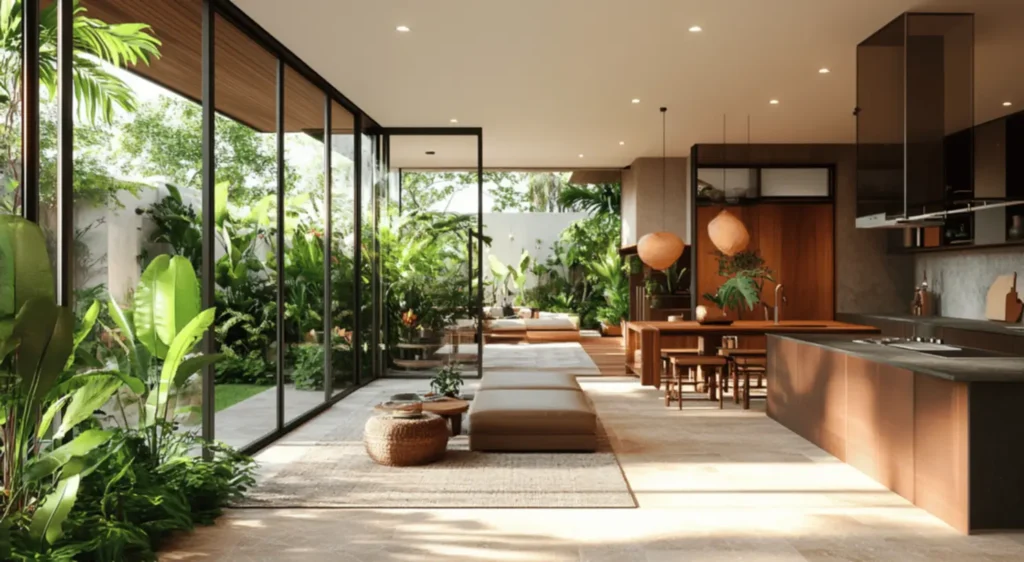Introduction to Residential architecture trends
As we dive into this year, it really feels like residential architecture trends is evolving at lightning speed. Homeowners nowadays are on the lookout for designs that not only match their personal style but also resonate with those modern values we all hold dear, like sustainability and practicality.
In this article, we’re gonna take a closer look at some of the hottest residential architecture trends that are redefining what homes look like today. With sustainability leading the charge, we’re witnessing a wave of energy-efficient designs, multifunctional living spaces, and cutting-edge technologies that are shaking things up in home design.
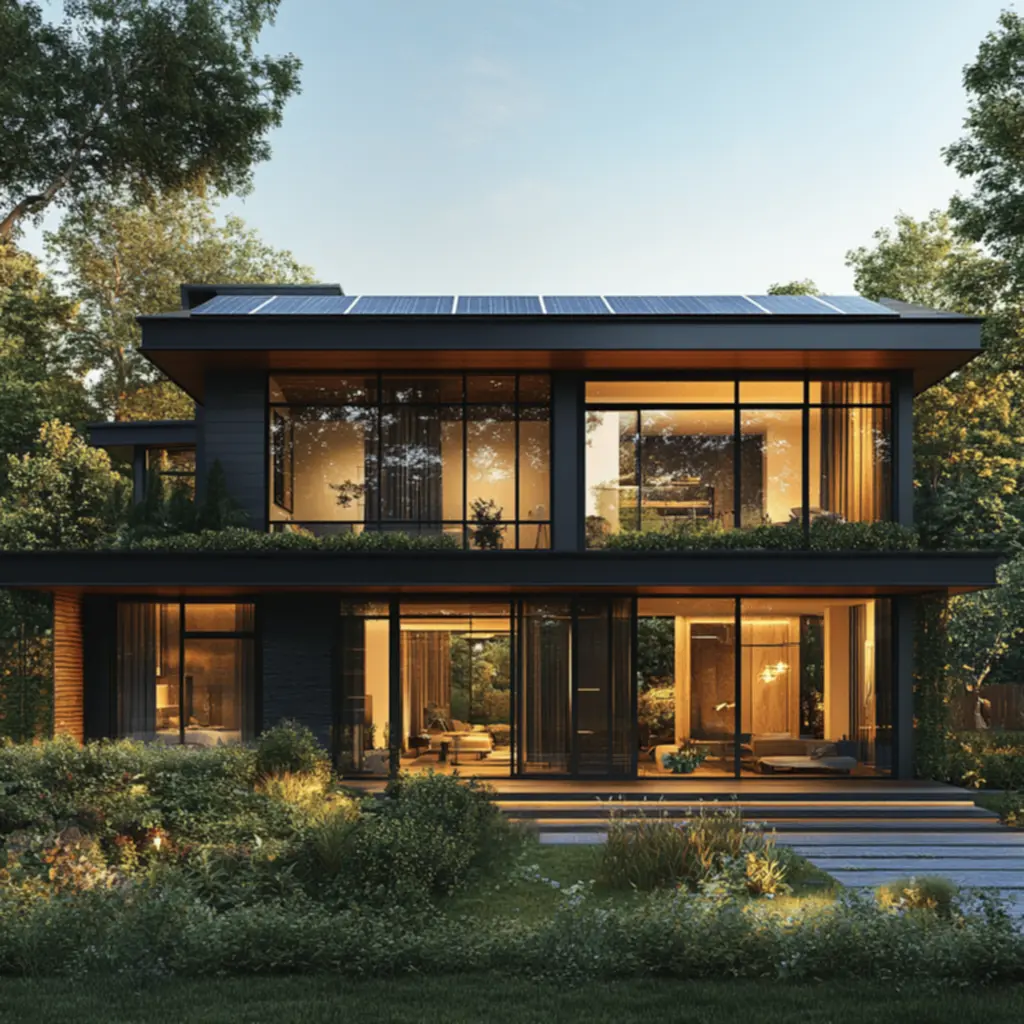
Here at 17Vibes, we totally get that a home is so much more than just four walls; it’s a true reflection of who we are and what we aspire to be. As we explore these trends together, picture how they could turn your own living space into a cozy sanctuary filled with style and comfort. Whether you’re thinking about sprucing up your current pad or just love keeping your finger on the pulse of home design, this guide’s packed with insights that’ll definitely resonate with your vision.
By putting energy efficiency at the top of the list and embracing those modern aesthetics, the designs we’ll talk about not only amp up your home’s good looks but also boost its overall value. So, let’s jump into this exciting journey and uncover the trends that are reshaping residential architecture, making it sing in harmony with our world today.
Energy-Efficient Homes: Building for Sustainability
You know, this whole movement toward energy-efficient homes is probably one of the biggest trends in residential architecture right now. With climate change being a hot topic, homeowners are really pushing for solutions that help minimize their environmental footprint. These energy-efficient homes make use of sustainable building materials, advanced insulation methods, and nifty technologies that cut down on energy use. It’s a win-win situation, benefiting not just our planet but also saving homeowners quite a bit on those utility bills.
Many builders are jumping on the bandwagon by adding energy-efficient systems like solar panels, smart thermostats, and energy-saving windows and doors to their projects. Plus, these homes usually come equipped with high-efficiency HVAC systems that keep the indoor climate comfy without guzzling energy. When you decide to go for energy-efficient designs, you’re really making a choice that promotes sustainability while soaking in the coziness of your home.
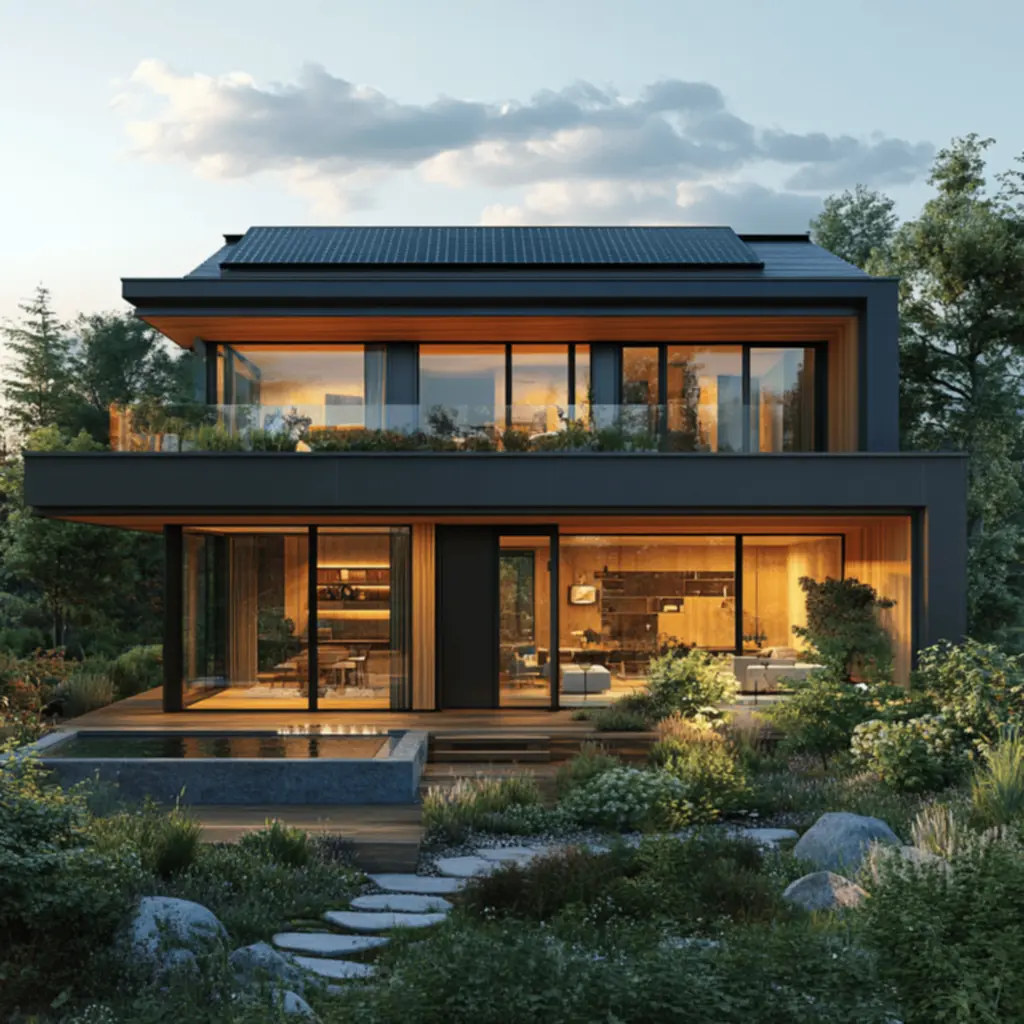
And let’s not forget, energy efficiency means savings in the long run; these homes often see a quicker appreciation in the real estate market. Investors and potential buyers are increasingly on the lookout for properties that demonstrate a genuine commitment to sustainability. So, homes built with energy efficiency in mind aren’t just a boon for Mother Earth; they can also be a smart move for your wallet.
The Rise of Passive Solar Design in Residential Architecture
Now, let’s talk about passive solar design — it’s seriously revolutionizing residential architecture by focusing on harnessing natural energy sources to keep homes comfy all year round. By optimizing the arrangement of windows, walls, and roofs, designers help ensure that homes can stay at a nice temperature without relying on mechanical systems for heating and cooling. It’s not just eco-friendly; it’s a smart, cost-effective approach.
Getting the hang of how to soak up sunlight is key when implementing passive solar techniques. For example, placing large south-facing windows strategically really lets in that glorious natural light and warmth during those chilly months. On the flip side, thoughtful overhangs and shades help keep things cool when summer rolls around. This clever mix of design and nature makes passive solar homes sustainable and super pleasant to live in.
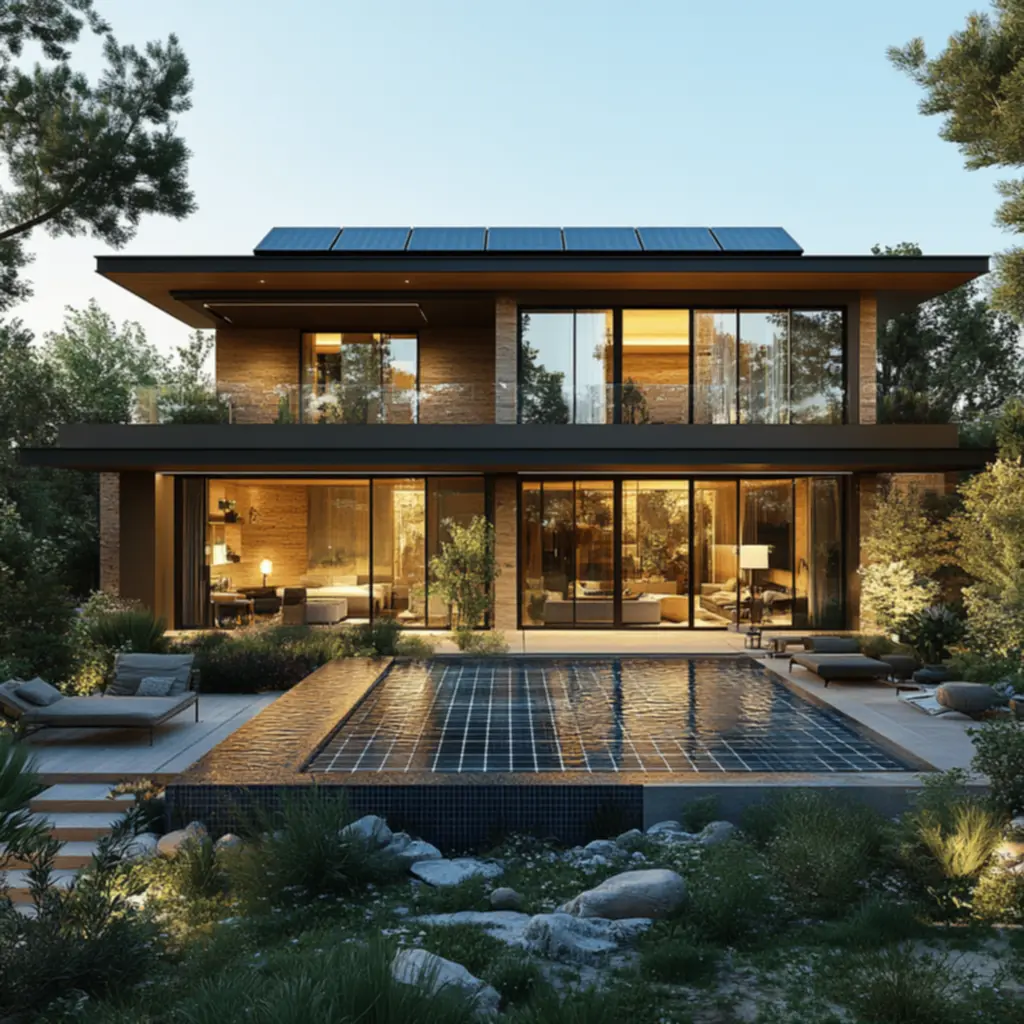
As this trend gathers steam, architects are constantly coming up with new ideas, resulting in homes that blend seamlessly into their surroundings. From earth-sheltered designs to facades that bask in sunlight, passive solar architecture is all about working in harmony with the environment while improving our living conditions.
Biophilic Design: Connecting Home with Nature
Biophilic design is more than just a passing trend in residential architecture; it represents a significant shift towards reconnecting us with nature in our daily lives. This style weaves natural elements into home design, creating spaces that foster well-being and calm. Things like green walls, expansive windows, and the use of organic materials are part of this approach, as they help satisfy our deep-rooted connection to the natural world.
Natural light is super important in biophilic design. Homes that maximize sunlight not only feel airier and more open but also boost our mood and productivity levels. Incorporating plants into our interior spaces has also become a crowd favorite since they not only purify the air but also inject some life into otherwise stark environments. In turn, these homes turn into safe havens where we can escape the chaos of our daily grind.
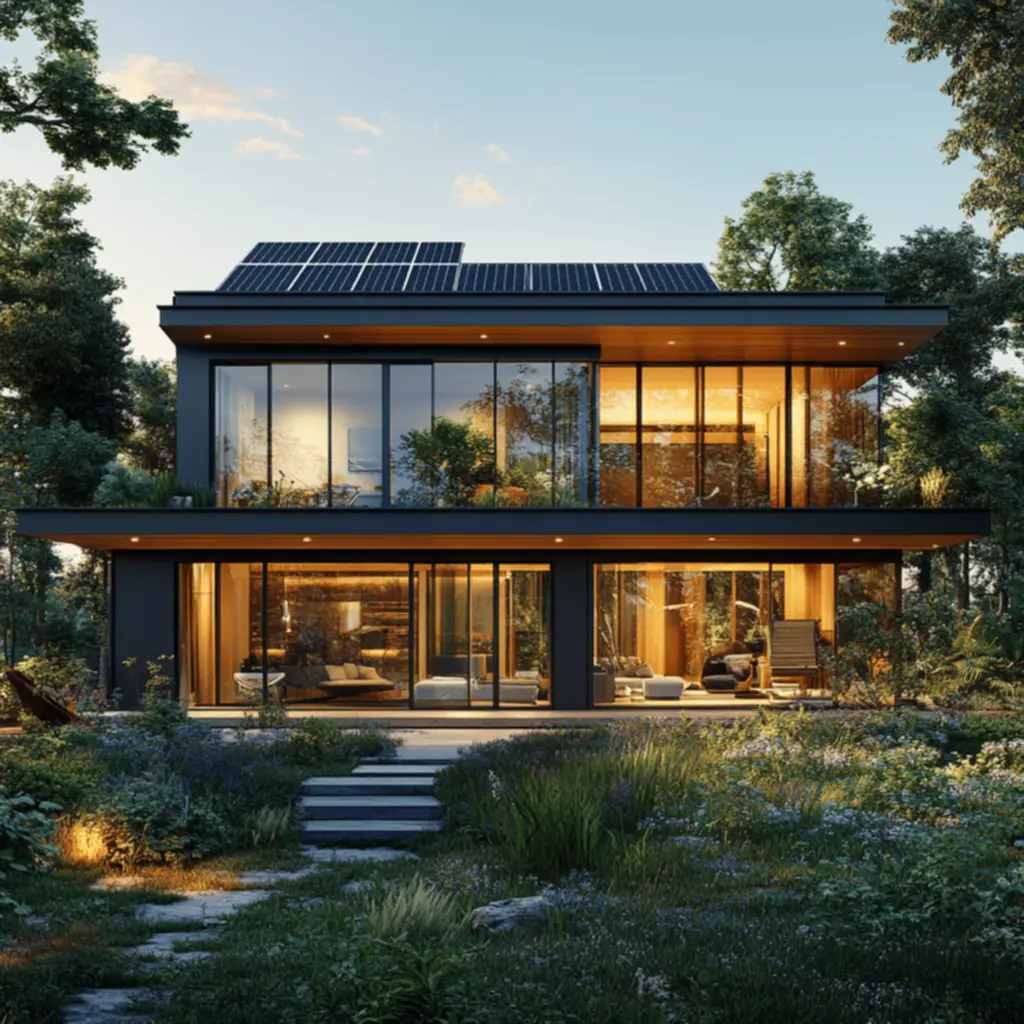
On top of this, biophilic design promotes a sense of community by encouraging outdoor living. More and more, you’ll see patios, gardens, and balconies designed for relaxation and social gatherings as homeowners strive to create cozy living areas that link indoor comforts with outdoor beauty.
Open-Concept Living: Maximizing Space and Light
Open-concept living has really taken off, completely changing how we think about space in residential architecture. This design idea promotes a smooth flow between various areas of the home — think kitchen, dining room, and living area all blending together. By knocking down unnecessary walls, these open layouts create a bright, airy vibe that perfectly suits modern lifestyles.
One of the standout perks of open-concept living is the boost in natural light. With fewer barriers, sunlight can flood deeper into the home, creating that warm and inviting atmosphere we all crave. This design choice doesn’t just make homes feel bigger; it also enhances social interactions since families and friends can easily gather and chat without being stuck in separate rooms.
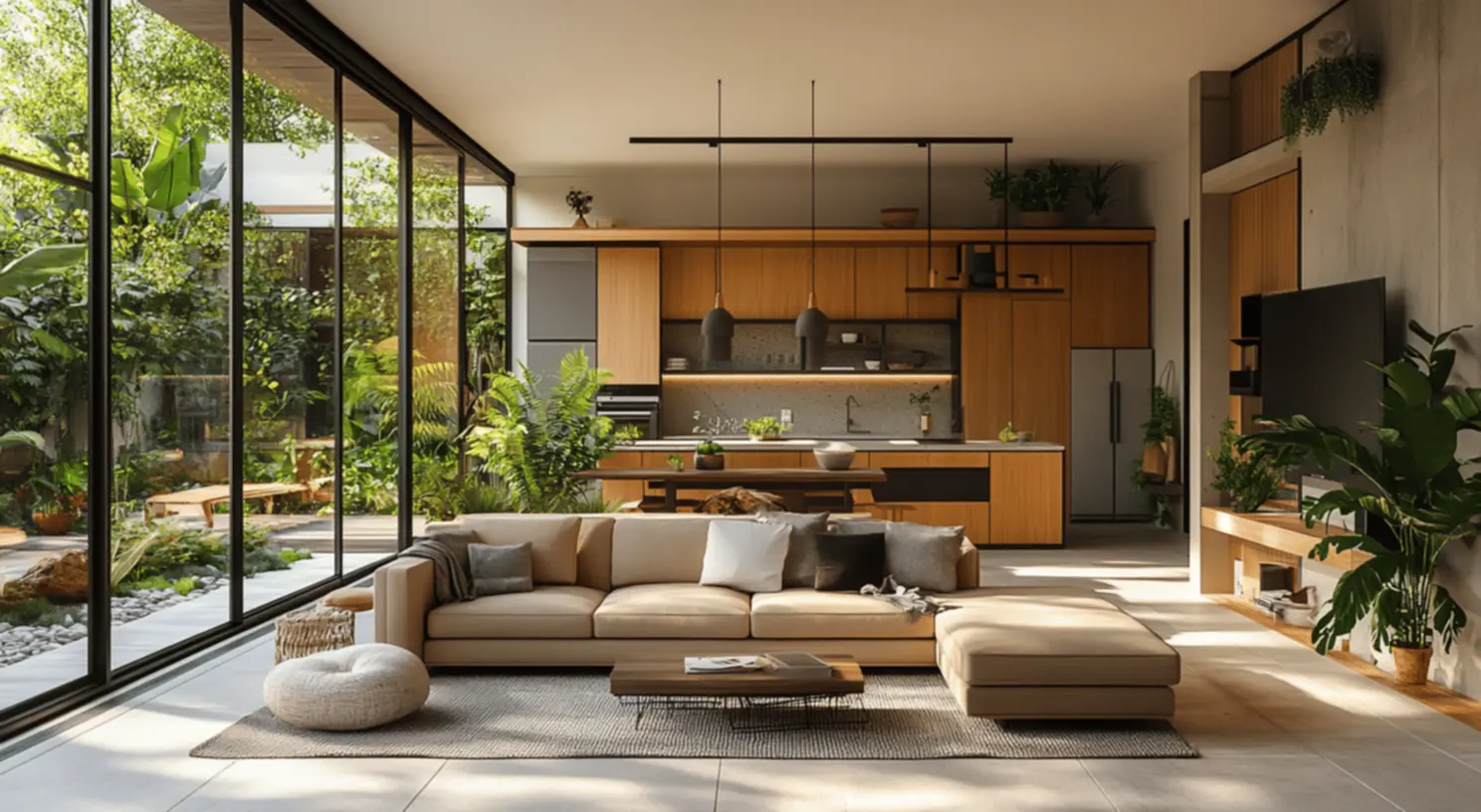
That said, while the benefits are numerous, open-concept living does come with its own set of challenges, like potential noise issues. Strategic acoustic treatments and thoughtfully arranged furniture can help tackle these hurdles, keeping this design trend functional without sacrificing aesthetics.
Flexible Multifunctional Spaces: Adapting to Modern Needs
In this fast-paced world we’re living in, having flexibility in home design is key. Multifunctional spaces give homeowners the ability to adjust their living environments to meet a wide range of needs. For instance, a spare room can effortlessly transform into a guest bedroom, a cozy home office, or even a playful kids’ space. With this adaptability, homes are more versatile and functional, all while maximizing space.
Home Offices: Designing for Productivity
The rise of remote work has made dedicated home office spaces more important than ever for many folks. Creating a productive home office means crafting an environment that inspires focus and creativity. You’ll want to include ergonomic chairs, ample lighting, and soundproofing measures to keep distractions at bay. Throw in some personal touches — like artwork, plants, or colors that ignite your imagination — and you’ve got a space where productivity can truly blossom.
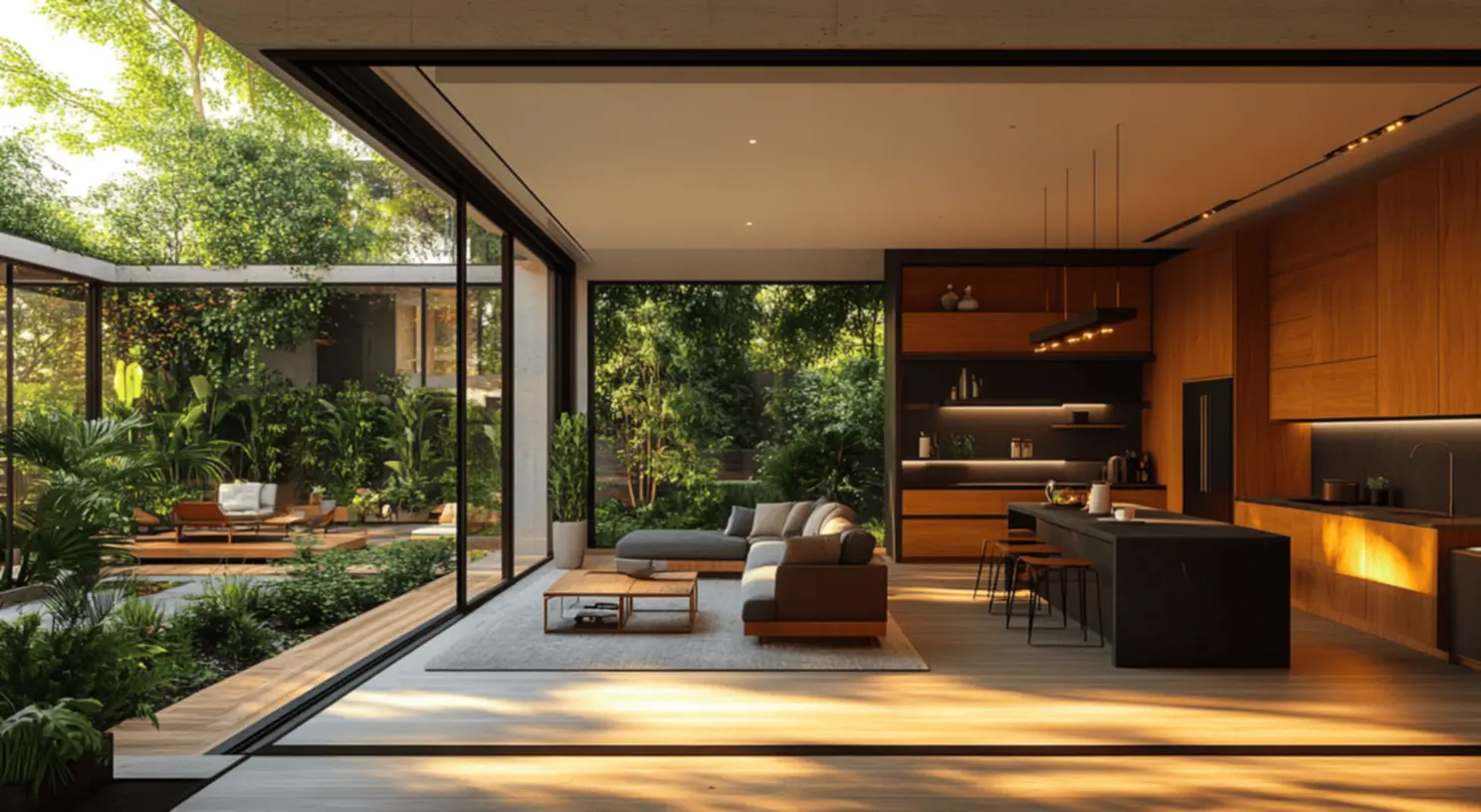
In-Law Suites: Accommodating Extended Family
With the change in family dynamics these days, in-law suites are really becoming all the rage. These separate living spaces within homes allow extended family members to have their own independence while still being close by. When designing an in-law suite, thinking about privacy, accessibility, and essential amenities is crucial. A well-planned suite can really enhance family ties while providing comfort and freedom for guests or older relatives.
Societal Changes Shaping Residential Architecture
Changes in society are having a big impact on residential architecture trends. Factors like remote work, evolving family structures, and environmental awareness are all driving the demand for designs that are more functional, flexible, and sustainable. Homeowners are aiming for architecture that showcases their values and fits their changing lifestyles.
With more people working from home, there’s a growing focus on creating functional spaces that support productivity. This shift is leading to an uptick in the design of home offices, state-of-the-art kitchens, and dedicated study areas. Homeowners are keen on spaces that don’t just meet their current needs but can also adapt to whatever life throws at them.
And let’s not overlook the trend towards minimalism that’s reshaping how we perceive spaces. Today’s homeowners are leaning into quality over quantity, searching for designs that highlight simplicity and multifunctionality. This mindset encourages a more thoughtful approach to consumerism, aligning with broader societal movements toward sustainability and mindful living.
Embracing Sustainability: Materials and Practices
Nowadays, embracing sustainability in residential architecture is a key focus for eco-conscious homeowners. This trend revolves around choosing materials that are kind to the environment, employing efficient building practices, and integrating eco-friendly technologies. From reclaimed wood and recycled metals to energy-saving appliances, every choice contributes to crafting a greener home.
Sustainable construction practices are all about cutting waste and minimizing our ecological footprint. Builders and architects are increasingly turning to strategies like modular construction, which reduces material waste and optimizes resource use. Not only do these practices enhance a home’s sustainability; they often result in improved performance and resilience over time.
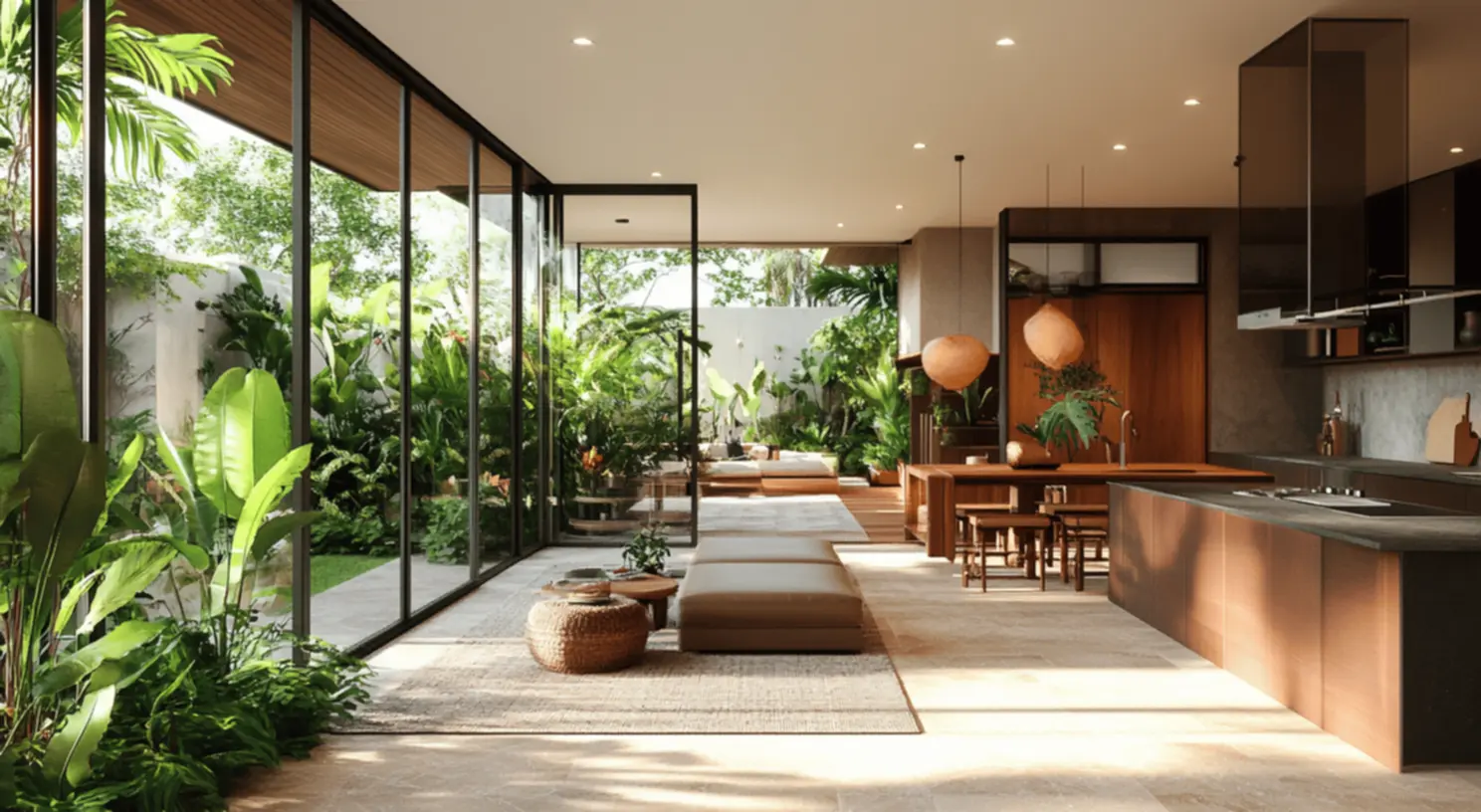
Moreover, homeowners are becoming more enlightened about the perks of living sustainably. By designing homes that lessen negative impacts on the environment, they’re investing in their future and the well-being of our planet. This trend marks a significant change towards being responsible stewards of our resources, showing us that residential architecture can really drive positive transformation.
Smart Home Technology: Integration and Innovation
Smart home technology is truly changing the game in residential architecture, providing us with unprecedented control and convenience. From smart lighting and automated heating to advanced security systems and integrated entertainment, these technologies empower homeowners to manage their living environments with ease and safety. This merging of technology and our homes offers a fantastic blend of convenience, security, and energy management.
As technology progresses, our homes are becoming more connected than ever. Smart devices can chat with one another, creating a seamless user experience. Now, homeowners can control almost everything from their smartphones, delivering both peace of mind and enhanced energy efficiency.
Looking down the road, the future holds amazing possibilities for smart home architecture. We can expect continuous innovations in artificial intelligence, machine learning, and the Internet of Things (IoT), promising to not just make our homes smarter but also more in tune with our needs. This integration will ensure that residential architecture keeps pace in an ever-evolving tech landscape.
Architectural Aesthetics: Trends in Home Design
When it comes to residential architecture, the aesthetic appeal of a home plays a big role in how we experience our spaces. The latest trends strike a balance between minimalism and maximalism, with many homeowners aiming to mix functional beauty with their personal flair. This balance guarantees that homes are not only comfortable but also mirror the personalities and tastes of their owners.
Simplicity is still a cornerstone of minimalism, highlighting clean lines and uncluttered areas. However, maximalism flips the script, inviting bold colors, quirky patterns, and a mash-up of textures. Finding that sweet spot between these styles allows homeowners to design spaces that are both inviting and visually exciting.
Furthermore, the push for sustainable materials and practices is leaving its mark on architectural aesthetics. Natural materials like wood, stone, and greenery are getting their moment in modern designs, promoting a sense of connection with the environment. Incorporating organic materials elevates visual appeal while supporting sustainability, proving that you can have style and eco-friendliness coexist beautifully.
Minimalism vs. Maximalism: Finding the Balance
Navigating the waters between minimalism and maximalism can be both thrilling and tricky. Minimalism offers a peaceful atmosphere centered on function, while maximalism celebrates unique designs bursting with personality. By blending elements from both styles, homeowners can create spaces that are practical yet full of character. Imagine a minimalistic piece of furniture adorned with maximalist décor — it creates an eclectic yet harmonious vibe, perfectly resonating with your distinctive style.
| Trend | Description | Benefits |
|---|---|---|
| Energy-Efficient Homes | Homes designed to minimize energy consumption. | Lower utility bills and reduced environmental impact. |
| Passive Solar Design | Utilizes natural sunlight and heat for hvac systems. | Energy savings and enhanced comfort. |
| Biophilic Design | Incorporates elements of nature into home design. | Improved well-being and connection to nature. |
| Open-Concept Living | Removes walls to connect living spaces. | Enhances flow, light, and social interaction. |
| Flexible Multifunctional Spaces | Designs that serve multiple purposes. | Adaptability for changing needs. |
Visual Inspirations: Stunning Examples of Modern Residential Architecture
To really get a feel for the current trends in residential architecture, let’s take a look at some jaw-dropping examples that perfectly capture the principles we’ve discussed. From sleek, energy-efficient homes nestled in stunning landscapes to innovative urban apartments that maximize tight spaces, the design possibilities are practically limitless.
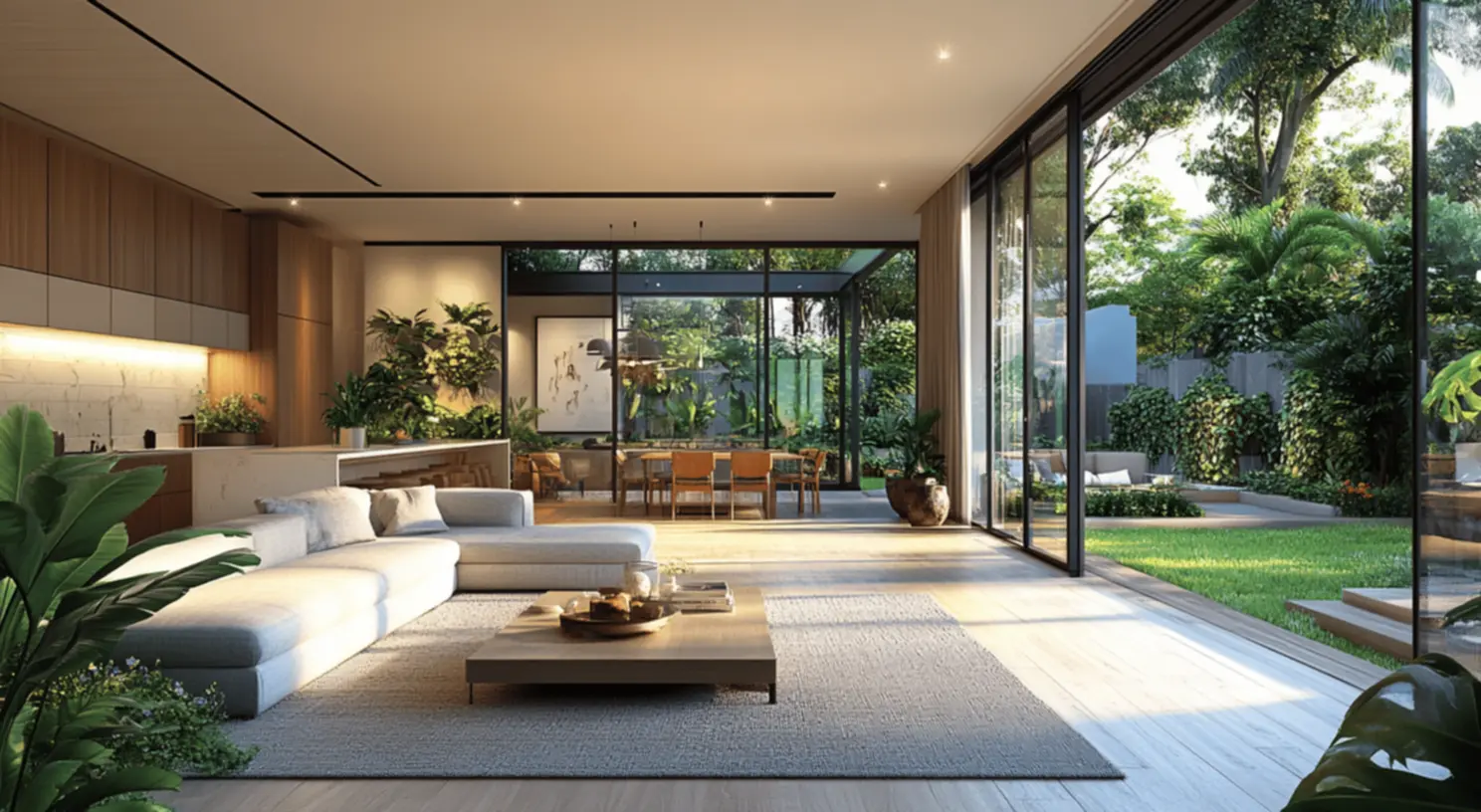
Picture a contemporary home with massive glass windows framed in natural wood, offering breathtaking views while maintaining that coveted energy efficiency. Or envision a vibrant city loft where bold murals and lush indoor gardens come together to create a lively living experience. These designs are more than mere houses; they’re bold statements reflecting a deeper connection to sustainability, nature, and personal style.
As we tirelessly innovate in the realm of residential architecture, the dreams of yesterday are transforming into the realities of today, giving us endless inspiration for our own living spaces.
Future Predictions: What’s Next in Residential Architecture?
Looking ahead, it seems the future of residential architecture is set for even more groundbreaking shifts. With a growing focus on sustainability, technology, and versatility, we can anticipate homes becoming more harmoniously integrated into their environments. Groundbreaking concepts like 3D-printed homes and augmented reality in design processes are on the brink of revolutionizing how we build and inhabit our living spaces.
As climate change continues to loom as a significant challenge, architects will face the task of designing homes that can withstand unpredictable weather while minimizing their environmental impact. Ideas such as vertical gardens and green roofs are likely to become fixtures in our urban landscapes, allowing city living to reflect the tranquility of nature.
Equally vital will be the future of community within architectural designs. Spaces that encourage connection and interaction will be essential in creating belonging amidst urban settings. By emphasizing collaboration, architects will craft residential designs that truly resonate with the individuals and families who call them home.
Conclusion: Residential architecture trends
As we sift through the latest residential architecture trends, one thing’s for sure: the way we envision our homes is changing profoundly. Embracing energy-efficient designs, sustainable materials, and cutting-edge technologies will not only enrich our living spaces but also have a positive ripple effect on the world around us.
At 17Vibes, we believe that your home should be a place of refuge, inspiration, and sustainability. By understanding and weaving these currents into your own living space, you can cultivate an environment that mirrors your values and enhances your daily life. The horizon of residential architecture is incredibly bright, promising us homes that are not just functional but deeply fulfilling.
Let’s keep exploring these trends and adopting innovative practices in our homes, ensuring they stay cozy sanctuaries filled with style. Together, we can fully embrace the future of home design.
For more insights into creating beautiful and functional living spaces, check out the article on modern interior design.
